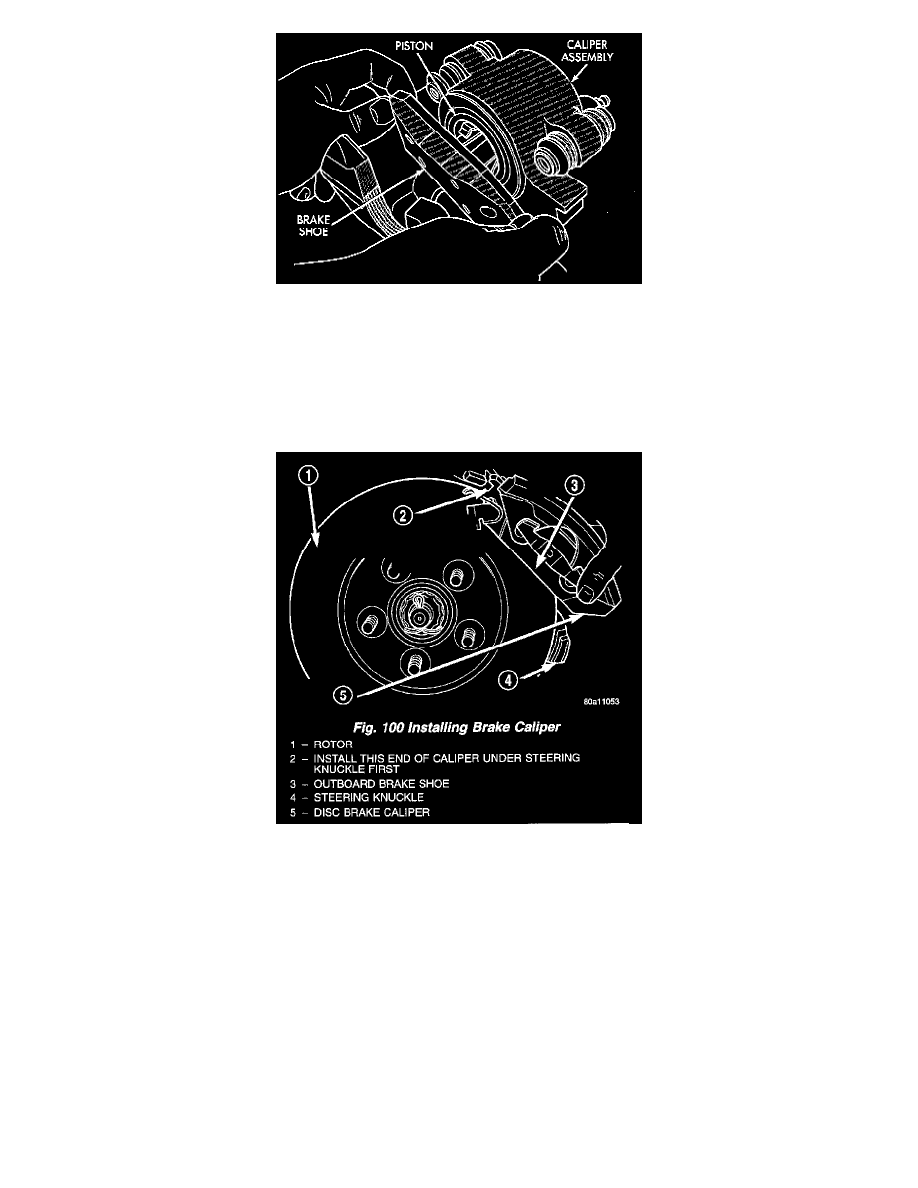Breeze L4-2.4L VIN X (2000)

Inboard Brake Shoe
5. Install the new inboard brake pad assembly into the caliper piston by firmly pressing into piston bore. Be sure inboard brake pad assembly is
positioned squarely against face of caliper piston.
6. Slide the new outboard brake pad assembly onto the caliper assembly.
CAUTION: Use care when installing the caliper assembly onto the steering knuckle so the seals on the caliper guide pin bushings do not get
damaged by the steering knuckle bosses. Also, make sure that caliper guide pin bushings and sleeves are clear of the steering knuckle bosses.
7. Carefully position brake caliper and brake shoes over brake rotor by first hooking top of brake shoes onto upper abutment on steering knuckle.
Then rotate caliper into position at bottom of steering knuckle.
NOTE: When installing guide pin bolts, extreme caution should be taken not to cross thread the caliper guide pin bolts.
8. Install the caliper guide pin bolts and tighten to a torque of 22 Nm (16 ft. lbs.).
9. Install the wheel and tire assembly.
10. Tighten the wheel mounting stud nuts in proper sequence until all nuts are torqued to half specification. Then repeat the tightening sequence to the
full specified torque of 135 Nm (100 ft. lbs.).
11. Remove jackstands or lower hoist.
12. Check brake fluid level.
NOTE: Before vehicle is moved after any brake service work, pump the brake pedal several times to insure the vehicle has a firm brake pedal.
13. Road test the vehicle and make several stops to wear off any foreign material on the brakes and to seat the brake shoes.
Rear
